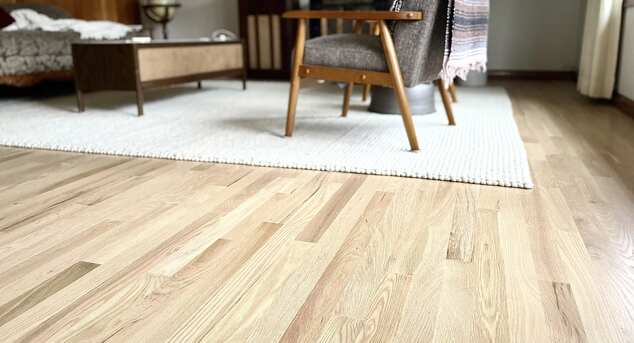Optimal Subfloor Types for Hardwood Installation
Posted by Aaron Schaalma
When it comes to installing hardwood flooring, the type of subfloor you have is crucial. Although you may consider particle board and pressed wood as potential choices, they have limitations in terms of hardwood installation. In this article, we will discuss why your subfloor has to be Oriented Strand Board (OSB) or plywood for hardwood installation.
Particle Board and Pressed Wood Restrictions on Wood Flooring
Particle board and pressed wood are often used as subfloor materials due to their low cost and easy availability. In most cases, you'll find them overtop of OSB and plywood subfloors. They typically add particle board under carpeting to bring it above other finished floor heights. However, these materials have restrictions when it comes to installing hardwood flooring. Particle board is made from compressed wood chips and resin, while pressed wood is made from wood fibers and adhesive. Neither of these materials are as strong and stable as OSB (oriented strand board) or plywood, which can cause issues when installing hardwood flooring.
Stability and Durability
One of the main reasons why OSB and plywood are preferred for hardwood installation is their stability and durability. These materials are made from thin layers of wood glued together to make a strong base for hardwood floors. Particle board and pressed wood, on the other hand, are more prone to warping and swelling when exposed to moisture, which can cause issues with the hardwood flooring on top.
Nail-Holding Power
Another important factor to consider when installing hardwood flooring is the nail-holding power of the subfloor. OSB and plywood are stronger and denser than particle board and pressed wood. This makes them better at holding nails and screws securely. It is very important to attach hardwood flooring securely to the subfloor to avoid any shifting or noise.
Moisture Resistance
Moisture is a major concern when it comes to hardwood flooring, as it can cause warping, cupping, and other issues. OSB and plywood have a higher moisture resistance compared to particle board and pressed wood, making them the only choice for hardwood installation. Additionally, OSB and plywood have a smoother surface, which allows for adhesion of the hardwood flooring. If the hardwood floors are being glued down you will need to check to see what type of OSB is in place. Some brands of OSB are treated with a special product so that they do not swell when exposed to the elements during home construction. As a result, adhesive does not adhere to the OSB without being sanded and prepped before the installation of wood flooring.
Compatibility with Underlayment
Underlayment is crucial for installing hardwood floors. It gives it a sound foundation to be installed on. Particle board and pressed wood should not be used as underlayment for hardwood flooring. OSB and plywood, on the other hand, are compatible with underlayment and provide a stable base for its installation. To install hardwood floors, use OSB or plywood for the subfloor.
These materials provide stability, durability, and moisture resistance, making them the ideal choice for hardwood installation. Avoid using particle board and pressed wood, as they have restrictions and can cause issues with your hardwood flooring. By choosing the right subfloor material, you can ensure a successful and long-lasting hardwood hardwood floor.
If you want to learn more about subfloor preparation, check out this article we wrote about how your home's foundation affects the installation of hardwood flooring.

